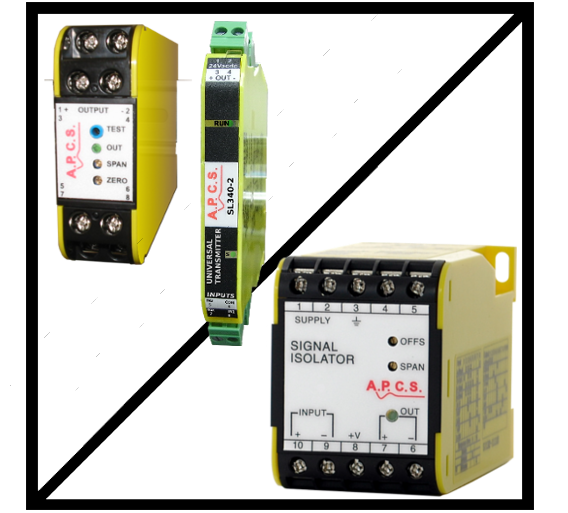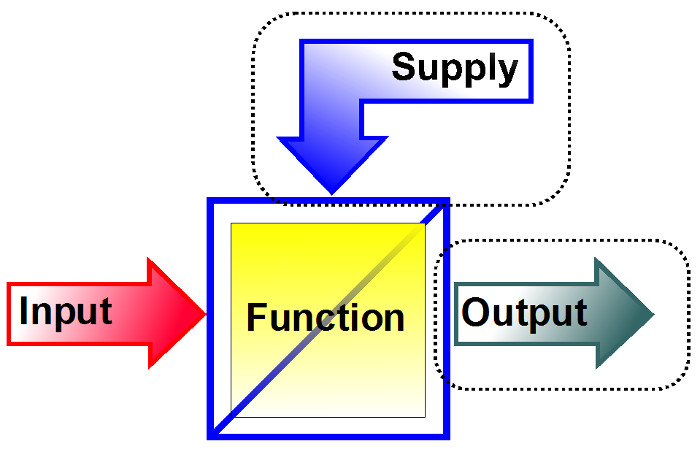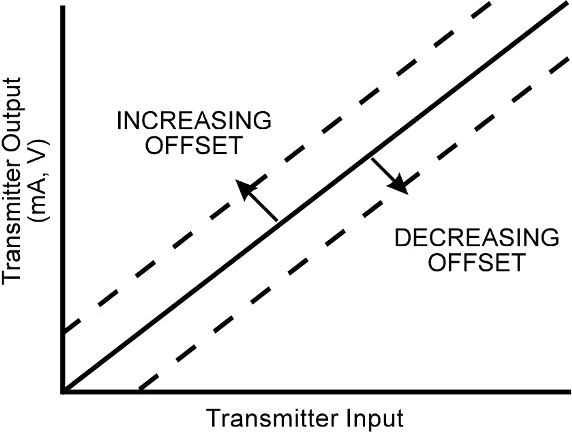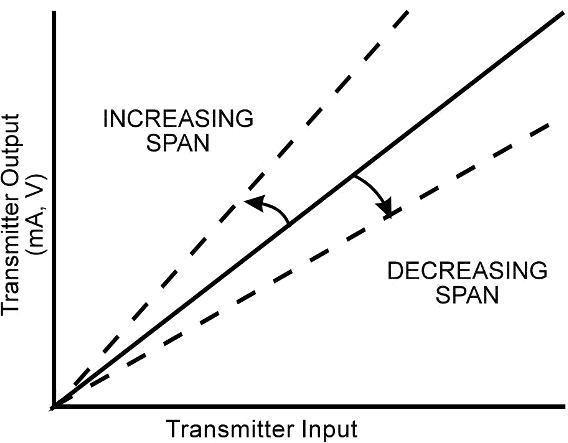Transmitter Function

Select products that include a Transmitter function.
Find Transmitter select ⇒ Input ⇒ Output
- 4-20mA
- 4-20mA, Select Output
- 4-20mA 2-Wire
- 4-20mA 4-20mA 2-Wire, Select Product
- SI231 Signal Isolator
- SI239 Signal Isolator

- 4-20mA 4-Wire
- dc mA/V 3-Wire
- 4-20mA dc mA/V 3-Wire, Select Product
- SI231 Signal Isolator
- SI239 Signal Isolator

- dc mA/V 4-Wire
- Bipolar
- 4-20mA Bipolar, Select Product
- BSI234 Bipolar Signal Isolator
- BSC133 Bipolar Signal Converter
- BSI134 Bipolar Signal Isolator

- High Drive
- 4-20mA High Drive, Select Product
- BSC133 Bipolar Signal Converter
- BSI134 Bipolar Signal Isolator
- PD121 Power Driver
- PD122 Power Driver

- Pulse/ Frequency
- 4-20mA Pulse/ Frequency, Select Product
- APC258 Analogue to Pulse Converter
- PWM157 Analog To PWM

- Relay
- 4-20mA Relay, Select Product
- DTI135 Dual Trippoint Isolator
- STI136 Single Trippoint Isolator

- Resistance
- 4-20mA Resistance, Select Product
- ATR167 Analog To Resistance
- ATP168 Analog to Potentiometer


- ac A
- ac A, Select Output
- 4-20mA 2-Wire
- ac A 4-20mA 2-Wire, Select Product
- ACT241 ac Current Transducer

- 4-20mA 4-Wire
- dc mA/V 3-Wire
- ac A dc mA/V 3-Wire, Select Product
- ACT241 ac Current Transducer

- dc mA/V 4-Wire
- Bipolar
- ac A Bipolar, Select Product
- BSC133 Bipolar Signal Converter

- High Drive
- ac A High Drive, Select Product
- BSC133 Bipolar Signal Converter

- Pulse/ Frequency
- ac A Pulse/ Frequency, Select Product
- APC258 Analogue to Pulse Converter

- Relay
- ac A Relay, Select Product
- DTI135 Dual Trippoint Isolator
- STI136 Single Trippoint Isolator


- ac V
- ac V, Select Output
- 4-20mA 2-Wire
- ac V 4-20mA 2-Wire, Select Product
- SI239 Signal Isolator
- AVT245 ac Voltage Transducer

- 4-20mA 4-Wire
- dc mA/V 3-Wire
- ac V dc mA/V 3-Wire, Select Product
- SI239 Signal Isolator
- AVT245 ac Voltage Transducer

- dc mA/V 4-Wire
- Bipolar
- ac V Bipolar, Select Product
- BSC133 Bipolar Signal Converter

- High Drive
- ac V High Drive, Select Product
- BSC133 Bipolar Signal Converter

- Pulse/ Frequency
- ac V Pulse/ Frequency, Select Product
- APC258 Analogue to Pulse Converter

- Relay
- ac V Relay, Select Product
- DTI135 Dual Trippoint Isolator
- STI136 Single Trippoint Isolator


- Conductivity
- Conductivity, Select Output
- 4-20mA 2-Wire
- Conductivity 4-20mA 2-Wire, Select Product
- CDT228 Conductivity Transmitter

- 4-20mA 4-Wire
- Conductivity 4-20mA 4-Wire, Select Product
- CDT128 Conductivity Transmitter

- dc mA/V 3-Wire
- Conductivity dc mA/V 3-Wire, Select Product
- CDT228 Conductivity Transmitter

- dc mA/V 4-Wire
- Conductivity dc mA/V 4-Wire, Select Product
- CDT128 Conductivity Transmitter


- dc A
- dc A, Select Output
- 4-20mA 4-Wire
- dc A 4-20mA 4-Wire, Select Product
- SL345 AC and Bipolar Isolator
- DCT247 Dc Current Transducer
- SI139 Signal Isolator

- dc mA/V 4-Wire
- dc A dc mA/V 4-Wire, Select Product
- SL345 AC and Bipolar Isolator
- DCT247 Dc Current Transducer
- SI139 Signal Isolator

- Pulse/ Frequency
- dc A Pulse/ Frequency, Select Product
- APC258 Analogue to Pulse Converter


- dc mA/V
- dc mA/V, Select Output
- 4-20mA 2-Wire
- dc mA/V 4-20mA 2-Wire, Select Product
- SI231 Signal Isolator
- SI239 Signal Isolator

- 4-20mA 4-Wire
- dc mA/V 3-Wire
- dc mA/V dc mA/V 3-Wire, Select Product
- SI231 Signal Isolator
- SI239 Signal Isolator

- dc mA/V 4-Wire
- Bipolar
- dc mA/V Bipolar, Select Product
- BSI234 Bipolar Signal Isolator
- BSC133 Bipolar Signal Converter
- BSI134 Bipolar Signal Isolator

- High Drive
- dc mA/V High Drive, Select Product
- BSC133 Bipolar Signal Converter
- BSI134 Bipolar Signal Isolator
- PD121 Power Driver
- PD122 Power Driver

- Pulse/ Frequency
- dc mA/V Pulse/ Frequency, Select Product
- APC258 Analogue to Pulse Converter
- PWM157 Analog To PWM

- Relay
- dc mA/V Relay, Select Product
- DTI135 Dual Trippoint Isolator
- STI136 Single Trippoint Isolator

- Resistance
- dc mA/V Resistance, Select Product
- ATR167 Analog To Resistance
- ATP168 Analog to Potentiometer


- Environmental-z
- Environmental-z, Select Output
- 4-20mA 2-Wire
- Environmental-z 4-20mA 2-Wire, Select Product
- LUX510 LUX Transmitter
- RTT508 Room Temperature Transmitter
- RLT511 Room Light Transmitter

- dc mA/V 3-Wire
- Environmental-z dc mA/V 3-Wire, Select Product
- LUX510 LUX Transmitter
- RTT508 Room Temperature Transmitter


- mV
- mV, Select Output
- 4-20mA 2-Wire
- mV 4-20mA 2-Wire, Select Product
- MVT223 Millivolt Transmitter
- SI239 Signal Isolator

- 4-20mA 4-Wire
- mV 4-20mA 4-Wire, Select Product
- SL340 Universal Transmitter
- SSP235 Signal Splitter
- DTI135 Dual Trippoint Isolator
- STI136 Single Trippoint Isolator
- SI139 Signal Isolator

- dc mA/V 3-Wire
- mV dc mA/V 3-Wire, Select Product
- MVT223 Millivolt Transmitter
- SI239 Signal Isolator

- dc mA/V 4-Wire
- mV dc mA/V 4-Wire, Select Product
- SL340 Universal Transmitter
- SSP235 Signal Splitter
- DTI135 Dual Trippoint Isolator
- STI136 Single Trippoint Isolator
- SI139 Signal Isolator

- Bipolar
- mV Bipolar, Select Product
- BSI234 Bipolar Signal Isolator

- Pulse/ Frequency
- mV Pulse/ Frequency, Select Product
- APC258 Analogue to Pulse Converter

- Relay
- mV Relay, Select Product
- DTI135 Dual Trippoint Isolator
- STI136 Single Trippoint Isolator


- pH/REDOX
- pH/REDOX, Select Output
- 4-20mA 2-Wire
- pH/REDOX 4-20mA 2-Wire, Select Product
- PHT229 pH / Redox Transmitter

- 4-20mA 4-Wire
- pH/REDOX 4-20mA 4-Wire, Select Product
- PHT129 pH / Redox Transmitter

- dc mA/V 3-Wire
- pH/REDOX dc mA/V 3-Wire, Select Product
- PHT229 pH / Redox Transmitter

- dc mA/V 4-Wire
- pH/REDOX dc mA/V 4-Wire, Select Product
- PHT129 pH / Redox Transmitter

- Pulse/ Frequency
- pH/REDOX Pulse/ Frequency, Select Product
- APC258 Analogue to Pulse Converter


- Position
- Position, Select Output
- 4-20mA 4-Wire
- Position 4-20mA 4-Wire, Select Product
- TPT194 Tap Position Transducer

- dc mA/V 4-Wire
- Position dc mA/V 4-Wire, Select Product
- TPT194 Tap Position Transducer


- Potentiometer
- Potentiometer, Select Output
- 4-20mA 2-Wire
- Potentiometer 4-20mA 2-Wire, Select Product
- SWT240 Resistance Transmitter

- 4-20mA 4-Wire
- Potentiometer 4-20mA 4-Wire, Select Product
- SL340 Universal Transmitter
- DTI135 Dual Trippoint Isolator
- STI136 Single Trippoint Isolator
- SI139 Signal Isolator

- dc mA/V 3-Wire
- Potentiometer dc mA/V 3-Wire, Select Product
- SWT240 Resistance Transmitter

- dc mA/V 4-Wire
- Potentiometer dc mA/V 4-Wire, Select Product
- SL340 Universal Transmitter
- DTI135 Dual Trippoint Isolator
- STI136 Single Trippoint Isolator
- SI139 Signal Isolator

- Bipolar
- Potentiometer Bipolar, Select Product
- BSI234 Bipolar Signal Isolator
- BSC133 Bipolar Signal Converter
- BSI134 Bipolar Signal Isolator

- High Drive
- Potentiometer High Drive, Select Product
- BSC133 Bipolar Signal Converter
- BSI134 Bipolar Signal Isolator
- PD121 Power Driver
- PD122 Power Driver

- Pulse/ Frequency
- Potentiometer Pulse/ Frequency, Select Product
- APC258 Analogue to Pulse Converter

- Relay
- Potentiometer Relay, Select Product
- DTI135 Dual Trippoint Isolator
- STI136 Single Trippoint Isolator

- Resistance
- Potentiometer Resistance, Select Product
- ATR167 Analog To Resistance
- ATP168 Analog to Potentiometer


- Pressure
- Pressure, Select Output
- 4-20mA 2-Wire
- Pressure 4-20mA 2-Wire, Select Product
- PIC246 Pressure to Current Converter

- 4-20mA 4-Wire
- Pressure 4-20mA 4-Wire, Select Product
- PIC176 Pressure To Current Converter

- dc mA/V 3-Wire
- Pressure dc mA/V 3-Wire, Select Product
- PIC246 Pressure to Current Converter

- dc mA/V 4-Wire
- Pressure dc mA/V 4-Wire, Select Product
- PIC176 Pressure To Current Converter


- Resistance
- Resistance, Select Output
- 4-20mA 2-Wire
- Resistance 4-20mA 2-Wire, Select Product
- RT243 Resistance Transmitter

- 4-20mA 4-Wire
- Resistance 4-20mA 4-Wire, Select Product
- SL340 Universal Transmitter
- DTI135 Dual Trippoint Isolator
- STI136 Single Trippoint Isolator

- dc mA/V 3-Wire
- Resistance dc mA/V 3-Wire, Select Product
- RT243 Resistance Transmitter

- dc mA/V 4-Wire
- Resistance dc mA/V 4-Wire, Select Product
- SL340 Universal Transmitter
- DTI135 Dual Trippoint Isolator
- STI136 Single Trippoint Isolator

- Bipolar
- Resistance Bipolar, Select Product
- BSC133 Bipolar Signal Converter

- High Drive
- Resistance High Drive, Select Product
- BSC133 Bipolar Signal Converter

- Pulse/ Frequency
- Resistance Pulse/ Frequency, Select Product
- APC258 Analogue to Pulse Converter

- Relay
- Resistance Relay, Select Product
- DTI135 Dual Trippoint Isolator
- STI136 Single Trippoint Isolator

- Resistance
- Resistance Resistance, Select Product
- ATR167 Analog To Resistance
- ATP168 Analog to Potentiometer


- RTD
- RTD, Select Output
- 4-20mA 2-Wire
- RTD 4-20mA 2-Wire, Select Product
- RTDT225 RTD Temperature Transmitter

- 4-20mA 4-Wire
- RTD 4-20mA 4-Wire, Select Product
- SL340 Universal Transmitter
- DTI135 Dual Trippoint Isolator
- STI136 Single Trippoint Isolator

- dc mA/V 3-Wire
- RTD dc mA/V 3-Wire, Select Product
- RTDT225 RTD Temperature Transmitter

- dc mA/V 4-Wire
- RTD dc mA/V 4-Wire, Select Product
- SL340 Universal Transmitter
- DTI135 Dual Trippoint Isolator
- STI136 Single Trippoint Isolator

- Bipolar
- RTD Bipolar, Select Product
- BSC133 Bipolar Signal Converter

- High Drive
- RTD High Drive, Select Product
- BSC133 Bipolar Signal Converter

- Pulse/ Frequency
- RTD Pulse/ Frequency, Select Product
- APC258 Analogue to Pulse Converter

- Relay
- RTD Relay, Select Product
- DTI135 Dual Trippoint Isolator
- STI136 Single Trippoint Isolator

- Resistance
- RTD Resistance, Select Product
- ATR167 Analog To Resistance
- ATP168 Analog to Potentiometer


- Signal Powered
- Signal Powered, Select Output
- 4-20mA 4-Wire
- Signal Powered 4-20mA 4-Wire, Select Product
- STI136 Single Trippoint Isolator

- dc mA/V 4-Wire
- Signal Powered dc mA/V 4-Wire, Select Product
- STI136 Single Trippoint Isolator

- Relay
- Signal Powered Relay, Select Product
- STI136 Single Trippoint Isolator


- Speed/ Frequency/ Pulse
- Speed/ Frequency/ Pulse, Select Output
- 4-20mA 2-Wire
- Speed/ Frequency/ Pulse 4-20mA 2-Wire, Select Product
- FRT250 Frequency Transmitter

- 4-20mA 4-Wire
- Speed/ Frequency/ Pulse 4-20mA 4-Wire, Select Product
- SL350 Pulse Frequency Transmitter
- DTI135 Dual Trippoint Isolator
- STI136 Single Trippoint Isolator
- RAF185 Ramp Function

- dc mA/V 3-Wire
- Speed/ Frequency/ Pulse dc mA/V 3-Wire, Select Product
- FRT250 Frequency Transmitter

- dc mA/V 4-Wire
- Speed/ Frequency/ Pulse dc mA/V 4-Wire, Select Product
- SL350 Pulse Frequency Transmitter
- DTI135 Dual Trippoint Isolator
- STI136 Single Trippoint Isolator
- RAF185 Ramp Function

- Bipolar
- Speed/ Frequency/ Pulse Bipolar, Select Product
- BSC133 Bipolar Signal Converter

- High Drive
- Speed/ Frequency/ Pulse High Drive, Select Product
- BSC133 Bipolar Signal Converter

- Pulse/ Frequency
- Speed/ Frequency/ Pulse Pulse/ Frequency, Select Product
- PLS257 Pulse Splitter
- APC258 Analogue to Pulse Converter

- Relay
- Speed/ Frequency/ Pulse Relay, Select Product
- DTI135 Dual Trippoint Isolator
- STI136 Single Trippoint Isolator

- Resistance
- Speed/ Frequency/ Pulse Resistance, Select Product
- ATR167 Analog To Resistance
- ATP168 Analog to Potentiometer


- Strain Gauge
- Strain Gauge, Select Output
- 4-20mA 2-Wire
- Strain Gauge 4-20mA 2-Wire, Select Product
- WT227 Strain Gauge Transmitter

- 4-20mA 4-Wire
- Strain Gauge 4-20mA 4-Wire, Select Product
- SL340 Universal Transmitter
- WT127 Strain Gauge Transmitter

- dc mA/V 3-Wire
- Strain Gauge dc mA/V 3-Wire, Select Product
- WT227 Strain Gauge Transmitter

- dc mA/V 4-Wire
- Strain Gauge dc mA/V 4-Wire, Select Product
- SL340 Universal Transmitter
- WT127 Strain Gauge Transmitter


- Thermocouple
- Thermocouple, Select Output
- 4-20mA 2-Wire
- Thermocouple 4-20mA 2-Wire, Select Product
- TCT226 Thermocouple Transmitter

- 4-20mA 4-Wire
- Thermocouple 4-20mA 4-Wire, Select Product
- SL340 Universal Transmitter
- DTI135 Dual Trippoint Isolator
- STI136 Single Trippoint Isolator
- TCT286 Thermocouple Transmitter/Isolator

- dc mA/V 3-Wire
- Thermocouple dc mA/V 3-Wire, Select Product
- TCT226 Thermocouple Transmitter

- dc mA/V 4-Wire
- Thermocouple dc mA/V 4-Wire, Select Product
- SL340 Universal Transmitter
- DTI135 Dual Trippoint Isolator
- STI136 Single Trippoint Isolator
- TCT286 Thermocouple Transmitter/Isolator

- Bipolar
- Thermocouple Bipolar, Select Product
- BSC133 Bipolar Signal Converter

- High Drive
- Thermocouple High Drive, Select Product
- BSC133 Bipolar Signal Converter

- Relay
- Thermocouple Relay, Select Product
- DTI135 Dual Trippoint Isolator
- STI136 Single Trippoint Isolator

- Resistance
- Thermocouple Resistance, Select Product
- ATR167 Analog To Resistance
- ATP168 Analog to Potentiometer


- Select an Input (above)

Select products that include a Transmitter function.

Transmitter Function

The signal transmitter converts a low level signal from any sensing device into a standardised process signal. These transmitters sometimes incorporate electromechanical devices such as strain gauges for measurement of physical values - pressure, flow, level, etc.
Signal transmitters can;
- Convert one specific type of signal into another type of
signal
Input: Thermocouple type J 0-800°C
Output: 4-20mA.
May provide galvanic isolation from one signal (input) to another (output).
Note that APCS defines a Signal Isolator as a transmitter with isolation.
When choosing a a transmitter please consider the following;
- Input signal or measurement.
- Output and what powers the signal conditioning module are a major determining factor when choosing a transmitter.
- Is isolation required?
Calibration, Offset and Span
Most transmitters have two adjustments in common which are termed OFFSET (zero) and SPAN (gain). These adjustments allow the output signal to be varied considerably, generally 20% of the transmitter range.
The principle used in the calibration of transmitters is that if two points on a straight line are established then the line itself is established.
By examining Figure 2 it can be seen that at low magnitudes of input signal the effect of span adjustment is very small. Consequently the first calibration point should be selected close to the bottom of the input range. The offset adjustment is then used to give the required output signal for the input signal being fed to the transmitter.
Because alteration of the span results in a higher output deviation at the top end of the input range it follows that the second calibration point should be at this top end, say in the top 25%. Thus the calibration at this point is achieved by imposing an input signal of suitable magnitude and adjusting the span potentiometer to give the correct output.
In practice it is sometimes difficult to eliminate the interaction effects between offset and span so it is recommended that the procedure for setting these two points be repeated until both points are obtained without the need for further adjustments.
The Offset Adjustment sets what is in effect the value of output when the input is zero.
Figure 1 shows the effect of altering the offset of a transmitter.

Fifure 1 Offset Adjustment

Figure 2 Span Adjustment
The Span Adjustment alters the slope of the relationship between input and output signals.
Figure 2 shows the effect of altering the span of a transmitter.
The principle used in the calibration of transmitters is that if two points on a straight line are established then the line itself is established. By examining Figure 2 it can be seen that at low magnitudes of input signal the effect of span adjustment is very small. Consequently the first calibration point should be selected close to the bottom of the input range. The offset adjustment is then used to give the required output signal for the input signal being fed to the transmitter.
Because alteration of the span results in a higher output deviation at the top end of the input range it follows that the second calibration point should be at this top end, say in the top 25%. Thus the calibration at this point is achieved by imposing an input signal of suitable magnitude and adjusting the span potentiometer to give the correct output.
In practice it is sometimes difficult to eliminate the interaction effects between offset and span so it is recommended that the procedure for setting these two points be repeated until both points are obtained without the need for further adjustments.